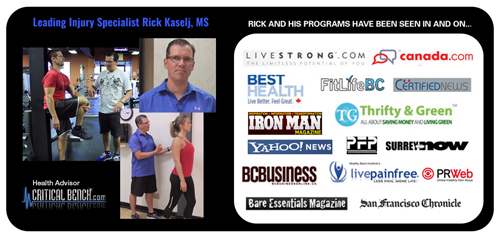“Victory is always possible for the person who refuses to stop fighting.” – Napoleon Hill
Anxiety can be a beast can’t it! It can alter your truth and distort your reality. Anxiety disorders can have an adverse effect on how you process your emotions, and change how you behave when faced with undesirable stress. Physical symptoms may also accompany anxiety. When experiencing mild anxiety you might find yourself feeling vague and unsettled. However, more severe anxiety can seriously affect your daily living.
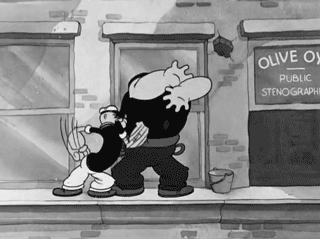
When we are overcome by feelings of anxiousness it can feel as though we are constantly fighting a losing battle. And if you are reading this blog then I can imagine that you might just be in the mind frame of the once popular cartoon character Popeye when he says, “I’ve had all I can stands, and I can’t stands no more!” And that is absolutely correct. You don’t have to stand for anxiety anymore. It’s time to stand against it! It’s time to gain the advantage in this fight! So let’s get ready to…. Well you know the rest.
Poet and philosopher Criss Jami once said, “Whenever we want to combat our enemies, first and foremost we must start by understanding them rather than exaggerating their motives.” So if we are going to have victory over this illness then we must first understand the true motive of anxiousness and anxiety.

At it’s core anxiety has good intention. It is often a normal healthy emotion. It is actually necessary for survival when we are faced with potentially harmful situations or worrying triggers. When faced with stress or trauma the body produces adrenaline (from adrenal glands), which in turn sends a message to the brain to activate the reactionary process called the “fight-or-flight” response. This response prepares the person to either stand and fight or turn and flee from a potential threat. A threat can be categorized as something dangerous (like facing bodily harm) or something nerve-racking (like giving your first speech). Physical symptoms associated with this reaction might be a raised heartbeat, increase in body temperature resulting in sweating, a heighten sensitivity to your surroundings.
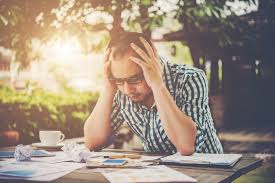
Anxiety becomes a problem, or a disorder, when it is experienced at disproportionate levels. Normal anxiety looks like someone being concerned about getting hit by a car so they cautiously look both ways before crossing a busy street. It becomes a disorder when that same someone is so concerned about getting by a car that they won’t even leave their home. Or perhaps you have lost your job and your home is about to go into foreclosure; it is normal to feel anxious about that situation. But if all you do is work! work! work! and you don’t spend any of your money, except for the bare necessities, because you are afraid that one day you could possibly loose your home (which you can more than afford because you live well below your means) to foreclosure, that’s when anxiety has become a disorder. Symptoms associated with this type of anxiety, especially generalized anxiety disorder (GAD) and panic disorder might be the following:
- insomnia, other sleep issues
- excessive worrying
- being easily irritated
- difficulties staying focused
- low immune system
- appetite, digestive issues
- tingling sensation down the back of head/neck
- shortness of breath, hyperventilation
- chest pain
- panic attack (which might mimic heart attack)
- and more…
According to the Mayo Clinic, there are several types of anxiety disorders that exist:
- Agoraphobia (ag-uh-ruh-FOE-be-uh) is a type of anxiety disorder in which you fear and often avoid places or situations that might cause you to panic and make you feel trapped, helpless or embarrassed.
- Anxiety disorder due to a medical condition includes symptoms of intense anxiety or panic that are directly caused by a physical health problem.
- Generalized anxiety disorder (GAD) includes persistent and excessive anxiety and worry about activities or events — even ordinary, routine issues. The worry is out of proportion to the actual circumstance, is difficult to control and affects how you feel physically. It often occurs along with other anxiety disorders or depression.
- Panic disorder involves repeated episodes of sudden feelings of intense anxiety and fear or terror that reach a peak within minutes (panic attacks). You may have feelings of impending doom, shortness of breath, chest pain, or a rapid, fluttering or pounding heart (heart palpitations). These panic attacks may lead to worrying about them happening again or avoiding situations in which they’ve occurred.
- Selective mutism is a consistent failure of children to speak in certain situations, such as school, even when they can speak in other situations, such as at home with close family members. This can interfere with school, work and social functioning.
- Separation anxiety disorder is a childhood disorder characterized by anxiety that’s excessive for the child’s developmental level and related to separation from parents or others who have parental roles.
- Social anxiety disorder (social phobia) involves high levels of anxiety, fear and avoidance of social situations due to feelings of embarrassment, self-consciousness and concern about being judged or viewed negatively by others.
- Specific phobias are characterized by major anxiety when you’re exposed to a specific object or situation and a desire to avoid it. Phobias provoke panic attacks in some people.
- Substance-induced anxiety disorder is characterized by symptoms of intense anxiety or panic that are a direct result of misusing drugs, taking medications, being exposed to a toxic substance or withdrawal from drugs.
- Other specified anxiety disorder and unspecified anxiety disorder are terms for anxiety or phobias that don’t meet the exact criteria for any other anxiety disorders but are significant enough to be distressing and disruptive.
Trauma ( physical, mental and emotional), being overstressed, stress from health concerns, your personality type, depression, genetics; all of these can make a person more prone to or put them at greater risk of experiencing anxiety disorders. Medical issues can also be an underlying contributor to anxiety. If an individual has a medical condition such as heart disease or diabetes then they are at risk of experiencing signs and symptoms of anxiety. Also, people with the following conditions could also be at risk for dealing with anxiety (Mayo Clinic):
- Chronic pain
- Respiratory issues like chronic obstructive pulmonary disease (COPD) or asthma
- Irritable bowel syndrome (IBS)
- Excessive alcohol and/or drug use, or withdrawal
- Tumors that cause an over-production of fight-or-flight hormones
- Withdrawal from anti-anxiety medications.
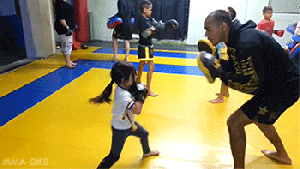
As of 2017, a census from the National Institute of Mental Health found that about 19% of the U. S. population (approx. 62 million adults) struggled with some form of anxiety. Of that 19% only about a third of people sought treatment says Dr. Uma Naidoo, MD, Harvard Medical School. These statistics still hold true today. So if you are among the two thirds who are not seeking treatment now is the time to come out of the your corner swinging and kicking back at anxiety.
“Strategy without tactics is the slowest route to victory. Tactics without strategy is the noise before defeat.” – Sun Tzu
Now that you know a little bit more about anxiety and its motives, it’s time to examine some ways by which you can defeat it. First and foremost, if you are not sure why you are experiencing anxiety, or you don’t know what might have triggered it, then it is important that you consult with a doctor or your primary care physician to confirm or rule out any underlying health conditions. Once health conditions are ruled out and it is determined that your anxiety is a result of one or more of the other risk factors mentioned above then your doctor might refer you to a mental health specialist who will help you with treatment options. They may even prescribe anxiety medications such as, benzodiazepine, selective serotonin reuptake inhibitors, buspirone or alprazolam.
Due to the possible unpleasant side effects of anxiety meds many people have chosen the route of complementary and alternative medicine (CAM) to help treat their anxiety. If you are taking medication for anxiety this article is not intended to persuade you to stop taking your meds and CAM instead. You should consult with your prescribing doctor before discontinuing any meds or other treatments they have prescribed. The great thing about CAMs is that they do just what the name suggests: they compliment! Not only can they be used in place of, but CAMs can also be used in conjunction with other anxiety treatment options. Below is a list of CAMs that can be incorporated into your life as you embark upon your fight against anxiety:
1. Cognitive Behavior Therapy (CBT)

Cognitive behavior therapy is a type of psychotherapy in which an individual is encouraged to challenge any negative patterns of thought they might have about themselves or the world. The desired result is to alter any unwanted thoughts or behavior patterns that are not conducive to one’s mental and emotional wellbeing.
According to the American Psychological Association, CBT has been shown to be an effective treatment in problems like depression or anxiety disorders. Studies have demonstrated that CBT helps to significantly improve functioning and quality of life. In many cases, it has been shown to be “as effective as, or more effective than, other forms of psychological therapy or psychiatric medications.” Check your local listings for a qualified therapist, counselor or coach who is experienced with CBT. You can even CBT online on websites like: Online-Therapy.com, Betterhelp.com, FaithfulCounseling.com or iCounseling.com.
2. Exercise

You don’t have to train like a boxer or MMA fighter but exercise is great way to fight against anxiety disorders. Experts say that exercise may work just as well a some meds prescribed for anxiety. Reasons given are that exercise causes a positive change in our serotonin and norepinephrine levels. These neurotransmitters are known as our ‘feel good’ neurotransmitters and are said to be affected by exercise hours after the workout is over. Studies have also shown that exercise aid in the growth of new brain neurons. This means that having a regular workout regimen can help promote positive brain function and improve mood which are important when dealing with anxiety.
Exercises like running, hiking and yoga, especially when done in nature, have been said to be among the best exercises. Of course, you are not limited to just these forms of exercises, what matters is that you get moving in any form of exercise you choose.
3. Nutrition

Every fighter know that proper nutrition is essential to being fight ready. It cannot be stressed enough that what we eat is very important, not just to our physical health, but to our mental and emotional health as well. With that being said, if you have an anxiety disorder it is important that you eat a balanced diet free of as much processed as possible. You should consume plenty of water and fruits and veggies that help you stay hydrated. Dramatically reduce or avoid all together caffeine and alcohol. According to Harvard Medical School, those suffering from anxiety disorders should be eating diets high in magnesium, zinc, omega-3 fatty acids, antioxidants, and quite possibly probiotics.
To save time, I will provide a list of anxiety fighting foods packed with these vitamins and minerals in a later article.
4. Massage & Bodywork
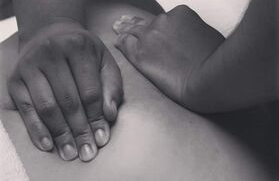
Massage and bodywork are a highly effective treatment for anxiety. According to the Mayo Clinic, one 60-minute massage session can lower cortisol (a stress hormone) by 30 percent. This is important because too much cortisol- caused by constantly being under stress, can lead to health issues like Cushing syndrome, rapid weight gain, weak muscles, diabetes, and other problems (Louise Chang, MD).
Anxiety can also cause muscle tension in the body. This is because stress and anxiety trigger the nervous system to go into fight-or-flight mode. When this happens the muscles in the body tense in preparation to respond to the perceived threat. This is a normal response and it should subside once the threat is over. However, if you are constantly under stress and your body remains in the fight-or-flight response, your muscles fibers might become uncomfortably tight and knotted. People who suffer with anxiety typically report experiencing muscle discomfort in the back, shoulders, neck and chest; but muscle tension can be experienced in any muscle/muscle groups throughout the body. Not only that, but there are certain muscles in the body, like the psoas major, that might contribute to anxiety symptoms; or create a false sense of anxiety.
The Depression and Anxiety journal conducted a study which found that participants who received regular massage for 12 weeks experienced a 50 percent reduction in anxiety symptoms. If you combine massage and bodywork with the other three treatment components listed above, there is a good chance you can overcome your anxiety disorder all together. That is why I have combined all four of these treatments into a 7-Week Attacking Anxiety Program. This program is for those who are looking for a more holistic approach to their anxiety disorder. However, if you are under the care of a healthcare professional and/or have been prescribed any antidepressant or antianxiety medications, then you should consult with your HP before discontinuing any treatments or medications.
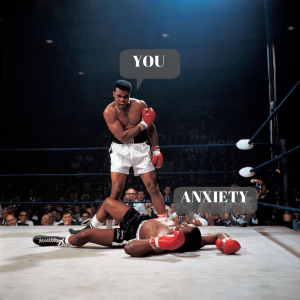
So there you go! You now have the tactics and strategy you need to fight back and overcome your anxiety disorder. You may not be able to take advantage of my 7 week program, but you have the tools you need above to create your own course of action. Simply check your local listings for professionals, programs and other resources in each of the components mentioned. I hope this article has been beneficial to you; and I bid you well on your journey to becoming mentally and emotionally healthy.


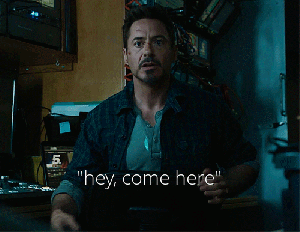
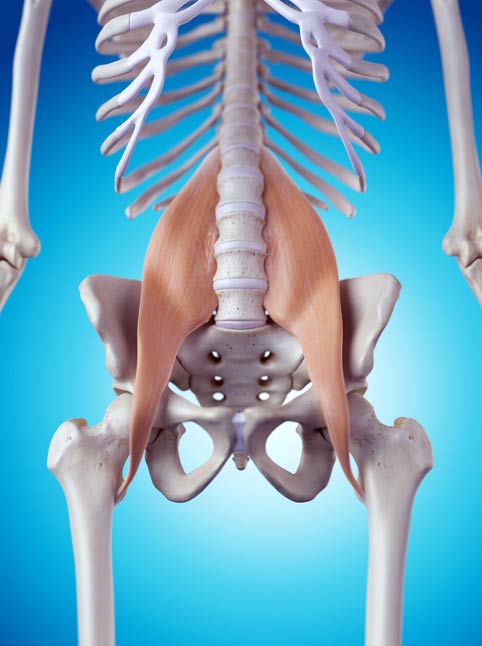 Although this muscle is one of the most important muscles in the body, it is also probably the most unknown or forgotten one. Why is it so important you say? Well Jo Ann Staugaard-Jones calls it a “realtor’s dream” due to it’s location, location, location! It is important because it is the only muscle that connects the upper body to the lower body. It originates at the T12 – L5 vertebrae and inserts at the lesser trochanter of the femur bone on both sides of the body.. This means that this muscle connects the spine to the legs. As a result, the psoas major is responsible for, or involved in, most of the movements we make throughout the day (including, but not limited to sitting, standing and walking).
Although this muscle is one of the most important muscles in the body, it is also probably the most unknown or forgotten one. Why is it so important you say? Well Jo Ann Staugaard-Jones calls it a “realtor’s dream” due to it’s location, location, location! It is important because it is the only muscle that connects the upper body to the lower body. It originates at the T12 – L5 vertebrae and inserts at the lesser trochanter of the femur bone on both sides of the body.. This means that this muscle connects the spine to the legs. As a result, the psoas major is responsible for, or involved in, most of the movements we make throughout the day (including, but not limited to sitting, standing and walking). Rick is a Kinesiologist, personal trainer, exercise rehabilitation specialist, writer and creator of exercise rehabilitation programs like
Rick is a Kinesiologist, personal trainer, exercise rehabilitation specialist, writer and creator of exercise rehabilitation programs like 